The autumnal equinox and Michaelmas at the end of this month mark the end of the outdoor season of the year.
The high point of the summer, close to the solstice, on St John’s Eve, was the most popular day to visit the holy well for the Pattern Day.
The Pattern was the best and biggest occasion of the bright summer months and while it also centred in and around Lugnasadh, on 1 August, an opportunity for the last of the revels took place at the wells dedicated to Michael, the archangel, at the end of September.
Like weddings and wakes, the Pattern Day was a typical Irish mixture of devout religious ritual, followed by wild abandon and fun.
The deeply devotional ritual aspect of the pattern witnessed devotees ‘paying the round’, circumambulating the well, sometimes on their knees, always in a sunwise direction.
They would recite untold litanies of prayers and mark their circuit, by tracing out the sign of the cross, using a small stone at the different stations. Equally, they would leave a token of their presence in the form of a ribbon, a holy medal or a coin.
When complete, this long, repetitive and meditative rite left the pilgrims spiritually restored but in need of physical sustenance...and this is when the fun and amusement began.
Pattern Day
The Pattern Day at the holy well was a day out and many who communed there looked forward to enjoying the different food on offer.
Back in the 1930s, at the Michaelmas festivities at Tinnehinch on the banks of the River Barrow, one of the favourite Pattern Day treats consisted of mutton pasties.
The butcher there at the time, Malachi Murphy, from Graiguenamanagh, used to make them. They were described as something like an apple tart with lean, uncooked mutton put in the centre of the pastry and baked.
Before being served, they were put into a boiling pot of mutton broth and left to simmer for a while. They were dished out to the appreciative pilgrims in a bowl of piping hot savoury broth.
Such mutton pies were a firm part of the traditions of Co Kerry, long associated with all fairs and gatherings in towns like Listowel, Killorglin and Dingle.
Here, in the 1930s, special Tig na bPíoga ‘pie-houses’ would spring up to meet the demands of travelling crowds but when the activities were outside the towns, temporary tents came into play.
They were a feature of the Michaelmas Pattern Day in the townland of Ballinageragh, near Lixnaw in North Kerry.
Temporary tents were made up of rough poles and old sacks and they had long tables inside allowing anything up to 20 people at a time to squeeze in around the tables.
Outside each tent there was a turf fire and suspended over it, on a tripod, was a big pot for heating the pies.
They were served on a saucer, with a little of the soup, for threepence each and devoured with gusto by the hungry masses. In the week prior to pattern days or fairs, the women of the local Kerry towns would be full-on, baking the favourite treat.
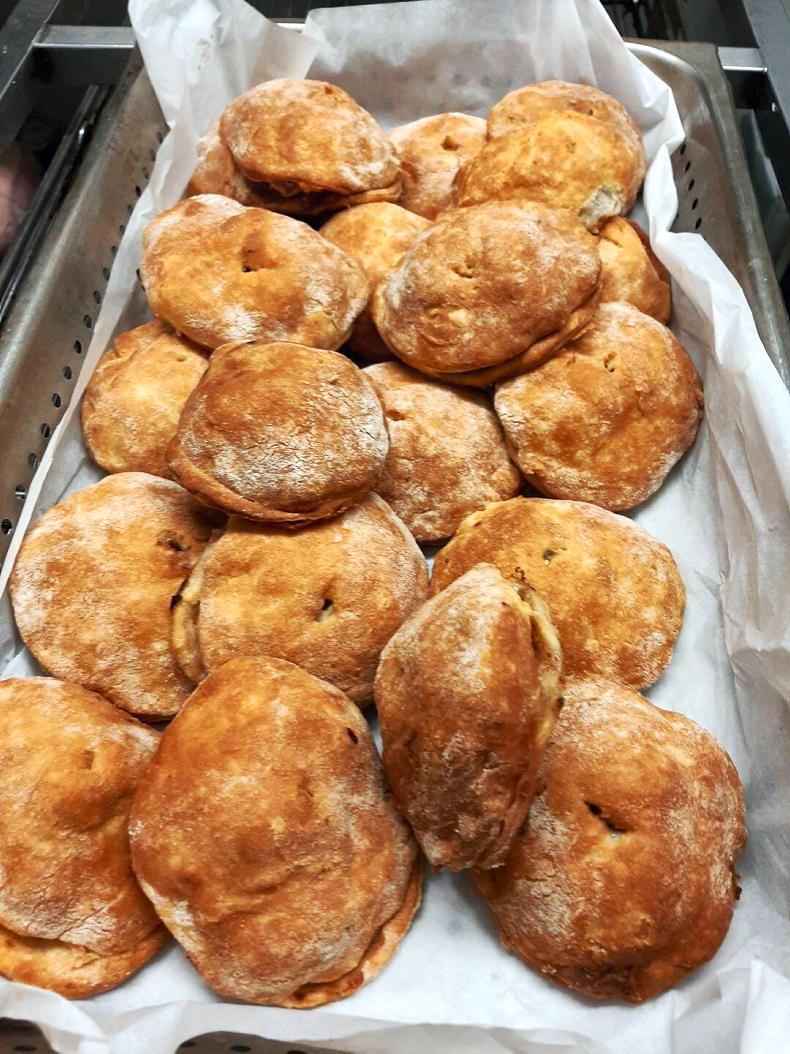
Castlegregory Pattern Pies on sale for the pattern day on August 15th this year.
To this day, the mutton ‘Pattern Pie’ is still the defining characteristic of the Co Kerry, Castlegregory Pattern, held on Lady’s Day, 15 August every year.
Here, large quantities of pattern pies are prepared and eagerly anticipated and consumed by those attending. Local man Martin Lynch says that around the 1940s, Mary Cournane in Main Street, Castlegregory ran a boarding house, and she used to make the pies.
Nowadays, the tradition is kept alive with the local Spar shop, the community council and local restaurants all making the traditional pies. People can buy them all year round in Der O’Sullivan’s Deli in Tralee.
As appealing as they might sound, not all mutton pies were of the same standard, and in the past they became the subject of sarcastic wit.
An anonymous poem, The Kerry Pie, written in 1901, is a comical recitation lampooning the pies. Amongst other things, it jokingly compares them to indestructible rubber:
‘A Kerry Pie will never puncture,
And tried by every machination,
Will still defy disintegration.'
It adds that they are impossible to digest, settling in the stomach like
stone:
‘And I only know there is no use,
submitting it to gastric juice,
For ever, as the pepsin flows,
Harder and tougher still it grows,
Until you feel in your inside,
A hard deposit stratified.’
Arrival of the Maggies
When speaking with Martin Lynch about the Pattern Day and the pies in Castlegregory, he fondly remembered that the day began with the arrival of the ‘Maggies’.
This was the old name given to the people who made their living from the travelling carnival amusements. The name comes from one popular attraction.
The so-called ‘Maggie Men’ used to hang up a thick, heavy canvas and set three or four solid poles into the ground in front of it. These poles were about four feet high and around these they dressed up funny effigies of men and women made of wood and straw.
They would place a bottle or a cup on the head of each. For a penny you got three shots and you fired from about ten yards back.
The wooden missiles or ‘maggie sticks’ were thick and heavy and were about two and a half feet long. Often there was no prize but just the simple satisfaction of hitting the effigy straight between the eyes or smashing the glass bottle perched on its head to smithereens.
Sometimes, the Maggie Man himself would unwittingly become the object of fun as he tried to dodge the flying wooden missiles while in the process of picking up those already cast. The men had their own cries to entice the punters:
‘The prince is here from England,
with a crown upon his head,
if you strike him in the temple,
you’ll surely kill him dead.’
It is suggested that the term maggie derives from the English term ‘mag’ meaning a gossip or chatterbox, alluding to such loud and funny sales banter used by the travelling men and women to attract customers to their game.
One appealing cry that elevated the promise of the maggie carnival was:
‘Come on everyone, two cartloads
of gold to be given away before
nightfall.’
Whatever about their cries, maggie comes directly from the Irish ‘fear magaidh’ meaning a joker or a jester.
Both the Maggies and the Pattern Pies, now all but forgotten, would have characterised the great fun and relished treats in the late Septembers of yesteryear.
Read more
Missing wells in Kilkenny
Of mice and men and cats
The autumnal equinox and Michaelmas at the end of this month mark the end of the outdoor season of the year.
The high point of the summer, close to the solstice, on St John’s Eve, was the most popular day to visit the holy well for the Pattern Day.
The Pattern was the best and biggest occasion of the bright summer months and while it also centred in and around Lugnasadh, on 1 August, an opportunity for the last of the revels took place at the wells dedicated to Michael, the archangel, at the end of September.
Like weddings and wakes, the Pattern Day was a typical Irish mixture of devout religious ritual, followed by wild abandon and fun.
The deeply devotional ritual aspect of the pattern witnessed devotees ‘paying the round’, circumambulating the well, sometimes on their knees, always in a sunwise direction.
They would recite untold litanies of prayers and mark their circuit, by tracing out the sign of the cross, using a small stone at the different stations. Equally, they would leave a token of their presence in the form of a ribbon, a holy medal or a coin.
When complete, this long, repetitive and meditative rite left the pilgrims spiritually restored but in need of physical sustenance...and this is when the fun and amusement began.
Pattern Day
The Pattern Day at the holy well was a day out and many who communed there looked forward to enjoying the different food on offer.
Back in the 1930s, at the Michaelmas festivities at Tinnehinch on the banks of the River Barrow, one of the favourite Pattern Day treats consisted of mutton pasties.
The butcher there at the time, Malachi Murphy, from Graiguenamanagh, used to make them. They were described as something like an apple tart with lean, uncooked mutton put in the centre of the pastry and baked.
Before being served, they were put into a boiling pot of mutton broth and left to simmer for a while. They were dished out to the appreciative pilgrims in a bowl of piping hot savoury broth.
Such mutton pies were a firm part of the traditions of Co Kerry, long associated with all fairs and gatherings in towns like Listowel, Killorglin and Dingle.
Here, in the 1930s, special Tig na bPíoga ‘pie-houses’ would spring up to meet the demands of travelling crowds but when the activities were outside the towns, temporary tents came into play.
They were a feature of the Michaelmas Pattern Day in the townland of Ballinageragh, near Lixnaw in North Kerry.
Temporary tents were made up of rough poles and old sacks and they had long tables inside allowing anything up to 20 people at a time to squeeze in around the tables.
Outside each tent there was a turf fire and suspended over it, on a tripod, was a big pot for heating the pies.
They were served on a saucer, with a little of the soup, for threepence each and devoured with gusto by the hungry masses. In the week prior to pattern days or fairs, the women of the local Kerry towns would be full-on, baking the favourite treat.

Castlegregory Pattern Pies on sale for the pattern day on August 15th this year.
To this day, the mutton ‘Pattern Pie’ is still the defining characteristic of the Co Kerry, Castlegregory Pattern, held on Lady’s Day, 15 August every year.
Here, large quantities of pattern pies are prepared and eagerly anticipated and consumed by those attending. Local man Martin Lynch says that around the 1940s, Mary Cournane in Main Street, Castlegregory ran a boarding house, and she used to make the pies.
Nowadays, the tradition is kept alive with the local Spar shop, the community council and local restaurants all making the traditional pies. People can buy them all year round in Der O’Sullivan’s Deli in Tralee.
As appealing as they might sound, not all mutton pies were of the same standard, and in the past they became the subject of sarcastic wit.
An anonymous poem, The Kerry Pie, written in 1901, is a comical recitation lampooning the pies. Amongst other things, it jokingly compares them to indestructible rubber:
‘A Kerry Pie will never puncture,
And tried by every machination,
Will still defy disintegration.'
It adds that they are impossible to digest, settling in the stomach like
stone:
‘And I only know there is no use,
submitting it to gastric juice,
For ever, as the pepsin flows,
Harder and tougher still it grows,
Until you feel in your inside,
A hard deposit stratified.’
Arrival of the Maggies
When speaking with Martin Lynch about the Pattern Day and the pies in Castlegregory, he fondly remembered that the day began with the arrival of the ‘Maggies’.
This was the old name given to the people who made their living from the travelling carnival amusements. The name comes from one popular attraction.
The so-called ‘Maggie Men’ used to hang up a thick, heavy canvas and set three or four solid poles into the ground in front of it. These poles were about four feet high and around these they dressed up funny effigies of men and women made of wood and straw.
They would place a bottle or a cup on the head of each. For a penny you got three shots and you fired from about ten yards back.
The wooden missiles or ‘maggie sticks’ were thick and heavy and were about two and a half feet long. Often there was no prize but just the simple satisfaction of hitting the effigy straight between the eyes or smashing the glass bottle perched on its head to smithereens.
Sometimes, the Maggie Man himself would unwittingly become the object of fun as he tried to dodge the flying wooden missiles while in the process of picking up those already cast. The men had their own cries to entice the punters:
‘The prince is here from England,
with a crown upon his head,
if you strike him in the temple,
you’ll surely kill him dead.’
It is suggested that the term maggie derives from the English term ‘mag’ meaning a gossip or chatterbox, alluding to such loud and funny sales banter used by the travelling men and women to attract customers to their game.
One appealing cry that elevated the promise of the maggie carnival was:
‘Come on everyone, two cartloads
of gold to be given away before
nightfall.’
Whatever about their cries, maggie comes directly from the Irish ‘fear magaidh’ meaning a joker or a jester.
Both the Maggies and the Pattern Pies, now all but forgotten, would have characterised the great fun and relished treats in the late Septembers of yesteryear.
Read more
Missing wells in Kilkenny
Of mice and men and cats






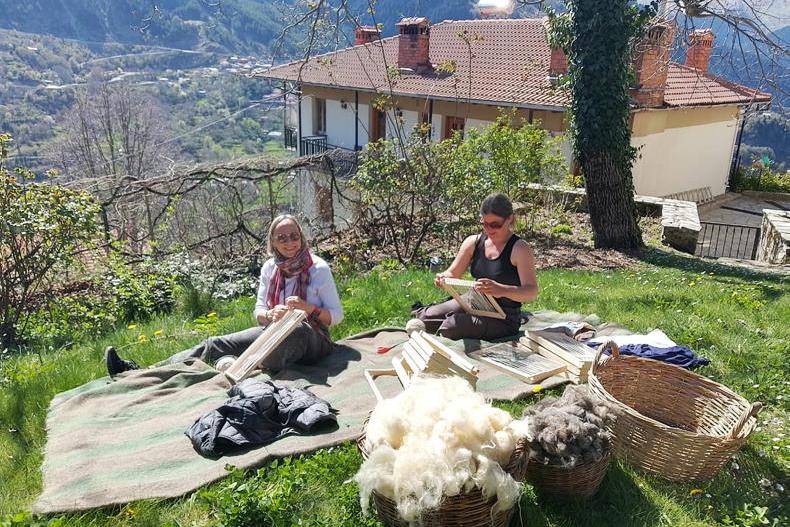

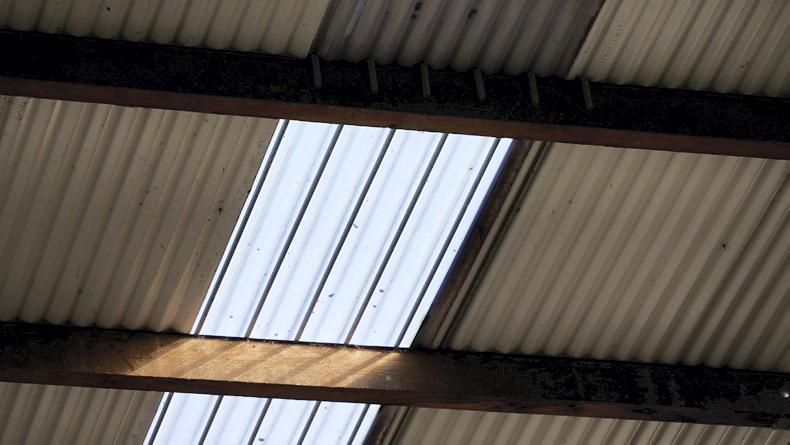
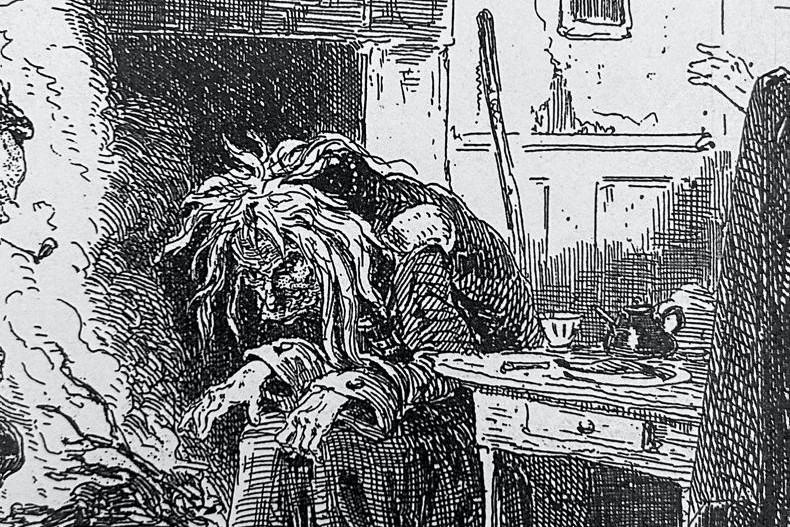
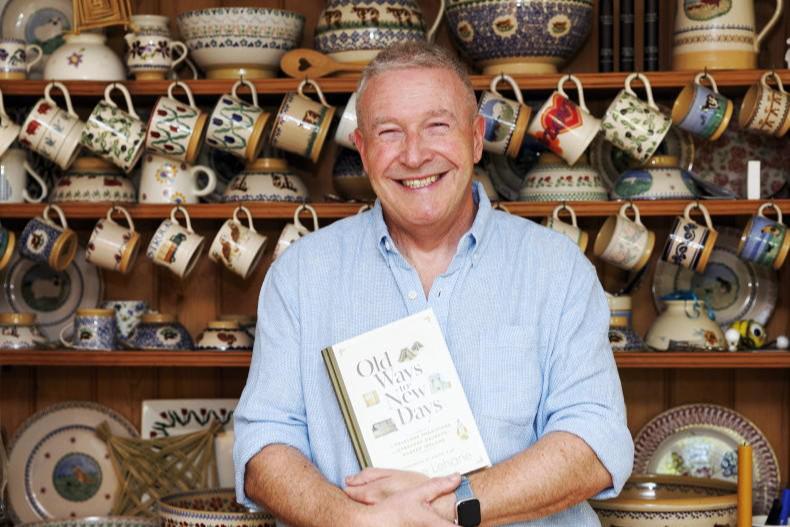
SHARING OPTIONS